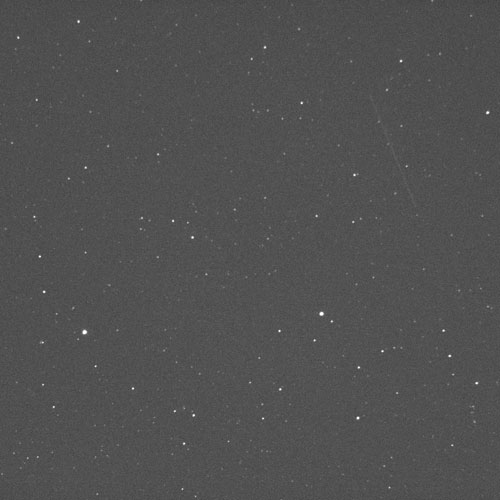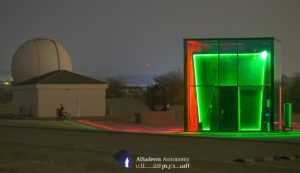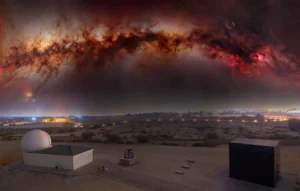Al Sadeem Astronomy’s resident astronomer Aldrin Gabuya captured the path of the asteroid in spite of poor sky condition early in the morning of May 16, 2018, at 00:20 local time when it was about 17 above the horizon in the constellation of Scorpio. Below is the time-lapse animation of the asteroid fly-by in 10 sec exposure per frame using the observatory’s Celestron 11-inch SCT mounted on Skywatcher EQ6 pro mount and ZWO1600MC cooled camera.
Asteroid 2010WC9 was first detected by the Catalina Sky Survey on November 30, 2010, until it became “lost” when it reached an apparent magnitude of 21.8, making it difficult for astronomers to continuously monitor and predict its track. It was spotted again last May 8, 2018, when it was initially designated as ZJ99C60 in the Near Earth Objects Confirmation Page (NEOCP) but later realized its reappearance, and has been monitoring it since then.
Having a diameter between 60-120 meters (about the size of a football field or New York City’s Empire State Building), it flew by Earth at its closest approach on May 15, 2018 at 2204 UTC (2:04 AM UAE Time) when it was just about 193,000 km away from Earth, travelling at 46,116 kph based on Minor Planet Center (MPC) records. This asteroid fly-by was one of the closest approaches ever observed of an asteroid this size.
Monitoring near-Earth objects such as asteroids are essential for the disaster risk reduction and preparation in case of a potential threat of one hitting Earth which could cause massive destruction. For instance, the extinction of the dinosaurs was caused by an asteroid impact. Another is the 2013 Chelyabinsk asteroid entry (meteor) which brought a massive shockwave upon disintegration, injuring about 1,000 people and caused multiple damages to property in Russia.
REFERENCES
https://www.thesun.co.uk/tech/6284981/asteroid-2010-wc9-pass-earth-visible-uk/
https://www.thesun.co.uk/tech/2134173/asteroid-2010-wc9-earth-meteor-about/
https://www.space.com/40594-lost-asteroid-2010-wc9-earth-flyby.html




